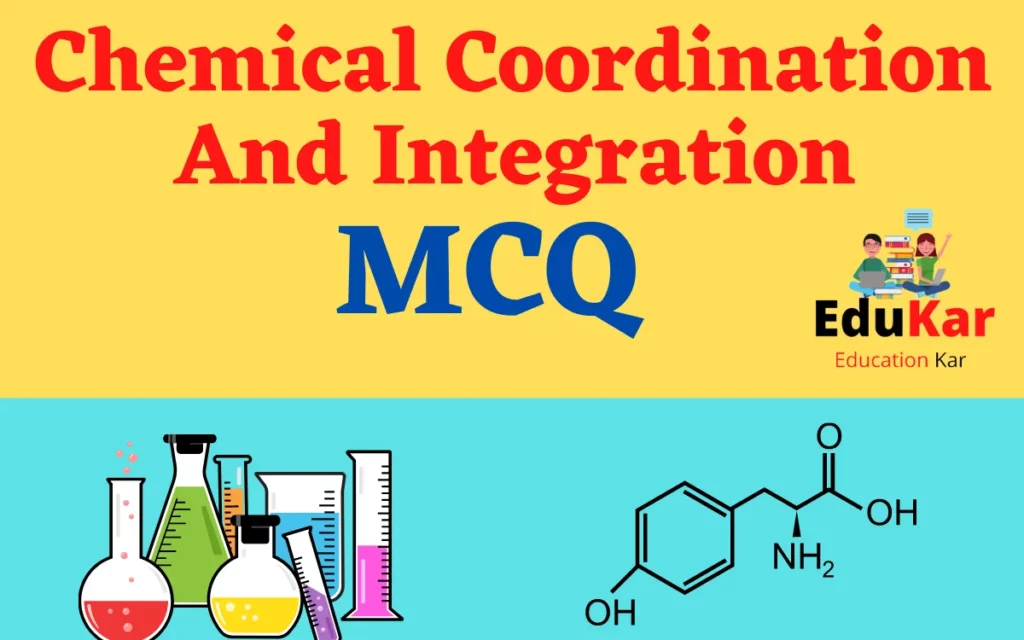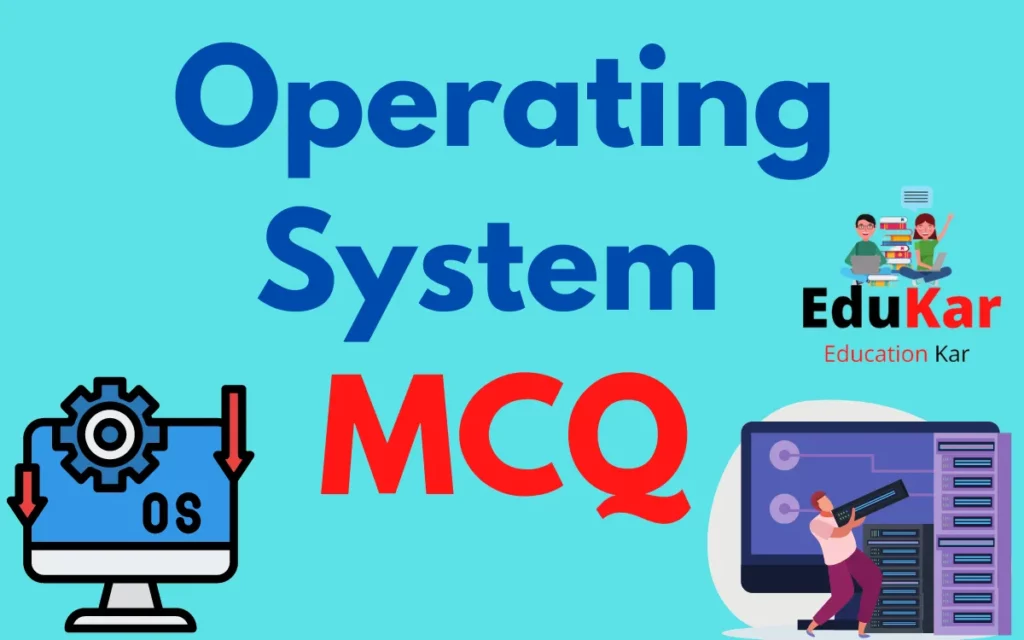
Chemical Coordination And Integration MCQ
Q1 : Which hormone causes dilation of blood vessels, increased oxygen consumption and glucogenesis?
(a) ACTH
(b) Glucagon
(c) Adrenalin
(d) Insulin
Answer: Adrenalin
Q2 : Which one of the below option is not a second messenger in hormone action?
(a) cGMP
(b) cAMP
(c) Calcium
(d) Sodium
Answer: Sodium
Q3 : A steroid hormone which regulates glucose metabolism is-
(a) Cortisone
(b) Corticosterone
(c) 11-deoxycorticosterone
(d) Cortisol
Answer: Cortisol
Q4 : Sertoli cells are regulated by the pituitary hormone known as-
(a) LH
(b) GH
(c) FSH
(d) Prolactin
Answer: FSH
Q5 : Tadpoles of frogs can be made to grow as giant sized tadpoles, if they are:
(a) Administered large amounts of thyroxine
(b) Reared on a diet rich in both egg yolk and glucose
(c) Reared on a diet plentiful in egg yolk
(d) Administered antithyroid substance like thiourea
Answer: Administered antithyroid substance like thiourea
Q6 : The blood calcium level is lowered by the deficiency of-
(a) Parthormone
(b) Both Calcitonin and Parathormone
(c) Calcitonin
(d) Thyroxine
Answer: Parthormone
Q7 : Which one of the following pairs of organs includes only the endocrine glands?
(a) Parathyroid and Adrenal
(b) Thymus and Testes
(c) Adrenal and Ovary
(d) Pancreas and Parathyroid
Answer: Parathyroid and Adrenal
Q8 : In human adult females oxytocin:-
(a) Stimulates growth of mamary glands
(b) Is Secreted by anterior pituitary
(c) Stimulates pituitary to secrete vasopressin
(d) Causes strong uterine contractions during parturition
Answer: Causes strong uterine contractions during parturition
Q9 : Toxic agents present in food which interfere with thyroxine synthesis lead to the development of:
(a) Thyrotoxicosis
(b) Cretinism
(c) Simple Goitre
(d) Toxic Goitre
Answer: Simple Goitre
Q10 : Which one of the following pairs is incorrectly matched?
(a) Insulin-Diabetes mellitus(disease)
(b) Somatostatin-Delta cells(source)
(c) Corpus luteum-Relaxin(secretion)
(d) Glucagon-Beta cells(source)
Answer: Corpus luteum-Relaxin(secretion)
Q11 : Which one of the below pairs of hormones are the examples of those that can easily pass through the cell membrane of the target cell and bind to a receptor inside it(mostly in the nucleus):-
(a) Cortisol, testosterone
(b) Insulin, glucagon
(c) Somatostatin, oxytocin
(d) Thyroxin, Insulin
Answer: Cortisol, testosterone
Q12 : Which one of the below is now being commercially produced by biotechnological procedures?
(a) Insulin
(b) Quinine
(c) Morphine
(d) Nicotine
Answer: Insulin
Q13 : Signals from fully developed foetus and placenta ultimately lead to parturition which requires the release of:
(a) Oxytocin from foetal pituitary
(b) Oxytocin from maternal pituitary
(c) Oestrogen from placenta
(d) Relaxin from placenta
Answer: Oxytocin from maternal pituitary
Q14 : A Pregnant female delivers a baby who suffers from stunted growth, mental retardation, low intelligence quotient and abnormal skin. This is the result of:
(a) Cancer of the thyroid gland
(b) Over secretion of pars distalis
(c) Deficiency of iodine in diet
(d) Low secretion of growth hormone
Answer: Deficiency of iodine in diet
Q15 : Which one of the below is not a steroidal hormone?
(a) Testosterone
(b) Cortisol
(c) Progesterone
(d) Insulin
Answer: Insulin
Q16 : Which of the below causes an increase in sodium reabsorption in the distal convoluted tubule?
(a) Decrease in aldosterone levels
(b) Decrease in antidiuretic hormone levels
(c) Increase in aldosterone levels
(d) Increase in antidiuretic hormone levels
Answer: Increase in aldosterone levels
Q17 : Hormone responsible for the secretion of milk after parturition is:-
(a) LH
(b) ACTH
(c) ICSH
(d) Prolactin
Answer: Prolactin
Q18 : Which one of the below hormones is not involved in sugar metabolism?
(a) Insulin
(b) Aldosterone
(c) Cortisone
(d) Glucagon
Answer: Aldosterone
Q19 : Which one of the below hormones synthesised elsewhere, is stored and released by the master gland?
(a) Prolactin
(b) Melanocyte stimulating hormone
(c) Luteinizing hormone
(d) Antidiuretic hormone
Answer: Antidiuretic hormone
Q20 : Which of the below is not derived from cholesterol?
(a) Vitamin-D
(b) Sex hormone
(c) Bile juice
(d) Insulin
Answer: Insulin
Q21 : GnRH from hypothalamus reaches anterior pituitary through-
(a) Lymph vessels
(b) Axon
(c) Nuclei
(d) Blood vessels
Answer: Blood vessels
Q22 : Which of the below pairs of hormones are not antagonistic (having opposite effects) to each other?
(a) Parathormone- Calcitonin
(b) Relaxin- Inhibin
(c) Insulin- Glucagon
(d) Aldosterone- Atrial Natriuretic Factor
Answer: Relaxin- Inhibin
Q23 : The posterior pituitary gland is not a ‘true’ endocrine gland because-
(a) It is under the regulation of hypothalamus
(b) It is provided with a duct
(c) It secretes enzymes
(d) It only stores and releases hormones
Answer: It only stores and releases hormones
Q24 : Effect of thyroxine on B.M.R. is-
(a) Uncertain
(b) Decrease
(c) No effect
(d) Increase
Answer: Increase
Q25 : Adrenal cortex produces-
(a) Aldosterone
(b) Adrenaline
(c) Epinephrine
(d) Calcitonin
Answer: Aldosterone
Q26 : Neurohypohysis secretes-
(a) Oxytocin and estrogen
(b) Vasopressin and oxytocin
(c) Vasopressin and growth hormone
(d) Vasopressin and estrogen
Answer: Vasopressin and oxytocin
Q27 : Glucagon is produced by-
(a) Oxyntic cells
(b) Peptic cells
(c) Alpha cells
(d) Beta cells
Answer: Alpha cells
Q28 : Female sex hormone is-
(a) Androgen
(b) Insulin
(c) Adrenaline
(d) Estrogen
Answer: Estrogen
Q29 : Function of Enterogastrone is-
(a) Inhibition of gastric secretion
(b) Regulation of bile flow
(c) Stimulation of pancreatic flow
(d) Stimulation of gastric secretion
Answer: Inhibition of gastric secretion
Q30 : Pancreatic secretion is stimulated by
(a) Secretin
(b) Enterogastrone
(c) Duocrinin
(d) Cholecystokin-pancreozymin
Answer: Cholecystokin-pancreozymin
Q31 : Progesterone is secreted by-
(a) Thymus
(b) Corpus Luteum
(c) Thyroid
(d) Testis
Answer: Corpus Luteum
Q32 : Insulin is secreted by
(a) Pituitary
(b) Islets of Langerhans
(c) Adrenals
(d) Thyroids
Answer: Islets of Langerhans
Q33 : Diabetes is a disease in which urine contains-
(a) Fat
(b) Salt
(c) Protein
(d) Sugar
Answer: Sugar
Q34 : Which of the following is correct-
(a) Insulin & Glucagon are secreted by different cells and have opposite effect
(b) Insulin & Glucagon are secreted by same cells
(c) Insulin & Glucagon are secreted by different cells
(d) None of the above
Answer: Glucagon and insulin are secreted by different cells and have opposite effect
Q35 : Ca2+ level is controlled by-
(a) Pituitary
(b) Thyroid
(c) Thyroid and parathyroids
(d) Hypothalamu
Answer: Thyroid and parathyroids
Q36 : Iodine is present in the secretion of
(a) Pancreas
(b) Adrenal
(c) Thyroids
(d) Pituitary
Answer: Thyroids
Q37 : Which one is not secreted by pituitary?
(a) F.S.H.
(b) A.C.T.H
(c) Thyroxine
(d) G.H.
Answer: Thyroxine
Q38 : Which gland is often referred in connection with AIDS-
(a) Thyroid
(b) Pancreas
(c) Thymus
(d) Adrenal
Answer: Thymus
Q39 : Reabsorption of water in distal parts of kidney tubules/urine concentration is controlled by-
(a) Relaxin
(b) Oxytocin
(c) Vasopressin/ADH
(d) Calcitonin
Answer: Vasopressin/ADH
Q40 : Glucagon produced by a-cells of islets of Langerhans-
(a) Decrease concentration of glucose in blood
(b) Converts glucose to glycogen
(c) Converts glycogen to glucose
(d) None of these
Answer: Converts glycogen to glucose
Q41 : Endocrine gland for combating emergency is
(a) Parthyroid
(b) Adrenal cortex
(c) Adrenal medulla
(d) Pancreas
Answer: Adrenal medulla
Q42 : Hormones involved in carbohydrate metabolism are
(a) Insulin, glucagon, epinephrine and parathormone
(b) Insulin, glucagon, glucocorticoid and calcitonin
(c) Insulin, glucagon, epinephrine and glucocorticoid
(d) Insulin, glucagon, Norepinephrine and melatonin
Answer: Insulin, glucagon, epinephrine and glucocorticoid
Q43 : Blood calcium level is increased by administration of
(a) Thyroxine
(b) Calcitonin
(c) Glucagon
(d) Parathormone
Answer: Parathormone
Q44 : Which hormone facilitates child birth?
(a) FSH
(b) Prolactin
(c) LH
(d) Oxytocin
Answer: Oxytocin
Q45 : Parathormone deficiency cause-
(a) Hypercalcemia
(b) Goitre
(c) Hypocalcemi
(d) All the above
Answer: Hypocalcemi
Q46 : FSH is involved in-
(a) Ovulation
(b) Control of blood sugar
(c) Growth
(d) Spermatogenesis
Answer: Spermatogenesis
Q47 : Insulin is-
(a) Steroid
(b) Amine Hormone
(c) Vitamin
(d) Proteinaceous hormone
Answer: Proteinaceous hormone
Q48 : GH controls growth through-
(a) mRNA
(b) rRNA
(c) tRNA
(d) None of the above
Answer: mRNA
Q49 : Epinephrine is-
(a) Cholinergic
(b) Andrenergic
(c) Both 1 and 2
(d) None of the above
Answer: Andrenergic
Q50 : Pituitary gland found in-
(a) Brain
(b) Trachea
(c) Abdomen
(d) Gonads
Answer: Brain



![[MCQ] Introduction to Computer Online Test introduction-to-computer-mcq-online-test](https://edukar.org/wp-content/uploads/2022/09/Introduction-to-Computer-MCQ-Online-Test-1024x536.webp)
![DBMS MCQ [Mcq on Database Management System] DBMS MCQ](https://edukar.org/wp-content/uploads/2022/12/DBMS-MCQ-1024x640.webp)
![Java MCQ with Answers [2023] Java MCQ with Answers](https://edukar.org/wp-content/uploads/2022/12/Java-MCQ-1024x640.webp)
